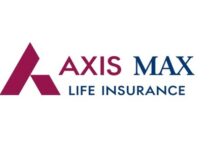New Delhi, June 21, 2018: The report titled “Europe POCT Devices Market Outlook to 2022 – by Geography (Western Europe & Eastern Europe), by Product (Blood Glucose POCT, Infectious POCT, Cardiac POCT, Rapid Coagulation POCT, Blood Gas & Electrolytes POCT, Hematology POCT, Pregnancy POCT, Urinalysis POCT, Cholesterol POCT, Fecal Occult POCT, Hb1Ac POCT & Drugs of Abuse POCT), by Customer Segments (Hospitals & Clinics, Diagnostics Labs & Primary Care Units and Homecare & Patients)” provides a comprehensive analysis of Europe POCT devices market evolution and overview, market ecosystem, market nature, value chain & entity analysis (OEM’s, C&F agents, distributors, retailers & customers), market size, and market segments by Geography (Western Europe & Eastern Europe), by Product (Blood Glucose POCT, Infectious POCT, Cardiac POCT, Rapid Coagulation POCT, Blood Gas & Electrolytes POCT, Hematology POCT, Pregnancy POCT, Urinalysis POCT, Cholesterol POCT, Fecal Occult POCT, Hb1Ac POCT & Drugs of Abuse POCT), by Customer Segments (Hospitals & Clinics, Diagnostics Labs & Primary Care Units and Homecare & Patients) and by Instruments and Consumables. Competition landscape, competition nature, major competition parameters and market share of major companies along with company profiles of Alere, Roche Holding AG, Siemens Healthineers, Becton Dickinson, Sysmex Corporation, EKF Diagnostics Holding, PTS Diagnostics, Werfen, Danaher Corporation, A. Menarini Diagnostics, Trinity Biotech, FujiFilm and others have been profoundly covered in the report. The report underscores prevailing government rules and regulation along with analyst recommendation to highlight the major opportunities and cautions.
The report is useful for POCT Devices manufacturers, distributors, retailers, potential entrants and other stakeholders to align their market centric strategies according to ongoing and expected trends in the future.
Europe POCT Devices Market Size and Overview
Market Size: Europe POCT Devices Market has grown registering a robust CAGR of close to 8% during the review period. Currently, the market is in growth stage with high potential of future expansion in both developed and developing countries of the region. Various factors supporting growth include high incidence of chronic diseases, rising health awareness, medical advancement in POCT sector, advancement in medical knowledge and R&D work, unease associated with laboratory testing methods and new companies venturing the market. Increase in urban population especially in the metro-cities which has been the largest end-user segment of the market and higher spending on R&D activities by the companies has led to the rise in number of point of care testing devices & customer interest. A substantial increase in awareness amongst population in cities & smaller towns has provided major thrust to this market. In parallel, growth & popularity of pregnancy& blood glucose POCT and advancement in technologies have given rise to new and improved devices. Advent of deadly infectious and cardiac diseases has led people to use these devices for quick detection. However, the market has been flooded with “fake” products, found all throughout the value chain.
Market Segmentation
By Geography: Western Europe has led the overall European scenario in terms of sales of POCT devices in 2017. Advanced medical infrastructure, higher level of disposable income of people, higher awareness and spending on healthcare, presence of well established manufacturers and government support has enabled countries such as the Germany, Italy and UK to lead the overall European landscape in terms of both, sales and demand in the review period.
By Product: Blood Glucose POCT devices led the market with highest sales revenue in 2017. The devices are used on routine basis to monitor glucose levels for people at home or for patients under tight glycemic control requirements. This segment was followed by Infectious, Cardiac, Rapid Coagulation, Blood Gas and Electrolytes, Hematology, Pregnancy POCT, Urinalysis POCT, Cholesterol Fecal Occult, Drugs of Abuse and Hb1Ac POCT devices respectively.
By Customer Segment: Hospitals and Clinics have been the largest customers of POCT devices in Europe in 2017. The entity uses these devices for diagnostics, treatment, monitoring and rapid testing. The tests carried out consists of TB, HIV, Malaria, Syphilis, Dengue, Strep A, HBV, C Diff, CD, 4, HCV, MRSA, Flu, UTI, Viral and others. Diagnostic labs and primary care units constitute for second largest share in the market. Home care and patients occupied lowest share owing to low volume sales and low replacement demand. Major motive to buy a POCT device for home patients is self assessment & referral and cost reduction.
By Instruments and Consumables: Instruments comprise of an apparatus or a machine that is used in the diagnosis of an illness or disease, or for detecting, measuring, restoring, correcting or modifying the structure or function of the body for some health purpose. Consumables primarily comprise of strip based instruments such as Electrochemical or reflectance strip-based glucose meters and INR analyzers. HbA1c, Pregnancy, Cholesterol and Drug of Abuse POCT devices utilize consumables in large scale for diagnostics.
Competitive Landscape
Competition in the market has been concentrated among 6 major & 10-15 smaller companies in 2017. These include Radiometer, Werfen, Siemens, Roche, Nova, Alere and others. Major competition is being driven through new product launches, innovation and marketing initiatives. Products are being manufactured domestically as well as imported.
Future Outlook and Tailwind
Market has been anticipated to showcase a substantial growth at a CAGR of close to 6% during the forecast period. Increase in the number of new entrants in the market, larger product acceptance, new product launches, expanding distribution channels of existing players and higher marketing expenditure done by the companies are expected to be tailwind for future growth.
Corporate Comm India(CCI NewsVoir)



























